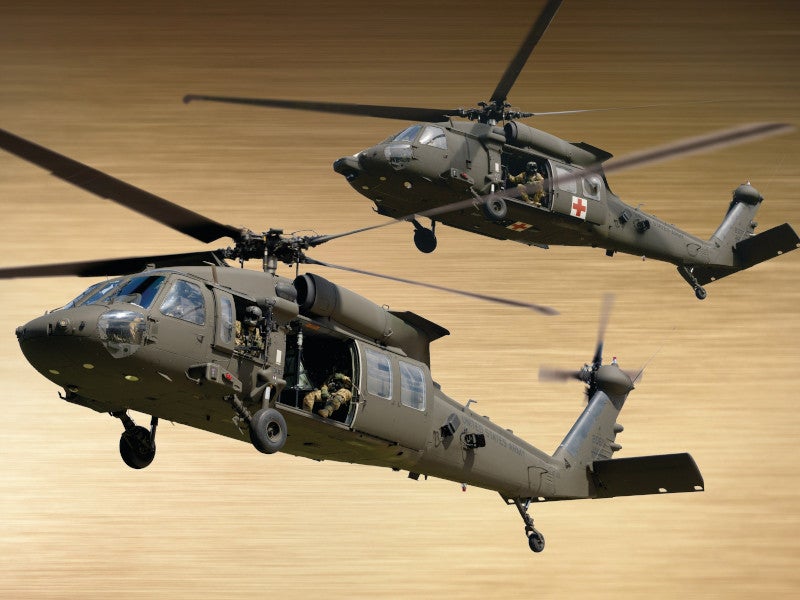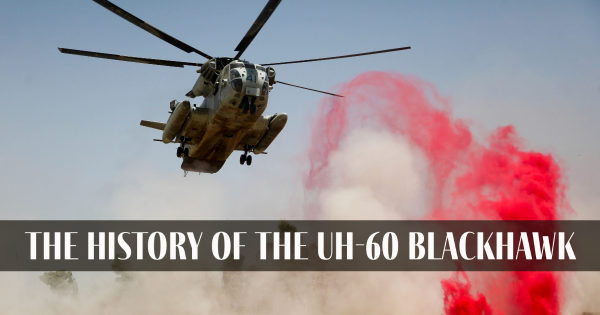Flight Ready: Ensuring Optimum Condition for Your UH 60 Helicopter
Flight Ready: Ensuring Optimum Condition for Your UH 60 Helicopter
Blog Article
Comprehending the Mechanics and Engineering Behind Uh 60 Helicopters
The UH-60 helicopter, commonly referred to as the Black Hawk, stands as a pinnacle of modern-day rotorcraft technology, personifying a mix of durable engineering and detailed mechanics. From its creation to its present models, the development of this airplane showcases a fusion of advancement and usefulness. As we peel off back the layers of the UH-60's design, a world of detailed systems and meticulous engineering comes to light. Recognizing the technicians and engineering behind this flexible aircraft reveals a world where accuracy fulfills power, and where each component plays a vital duty in attaining flight.
Background of UH-60 Helicopters
The background of UH-60 helicopters traces back to the late 1970s when the United States Army sought a advanced and flexible utility helicopter to change its aging fleet. In feedback to this requirement, the Sikorsky Aircraft Firm established the UH-60 Black Hawk helicopter. Presented in 1979, the UH-60 quickly came to be a staple in armed forces operations because of its excellent abilities.
The UH-60 was developed to master a range of objectives, including troop transport, medical emptying, digital warfare, and unique procedures. Its ability to adjust to various duties made it a beneficial asset to the united state Army and various other military forces around the world
Throughout the years, the UH-60 system has gone through numerous upgrades and variations to boost its performance and keep rate with advancing objective requirements. These helicopters have seen comprehensive service in conflicts such as the Gulf Battle, Afghanistan, and Iraq, showcasing their integrity and flexibility in varied functional atmospheres. The UH-60's rich history is a testament to its long-lasting heritage as a leading utility helicopter.

Engine and Power Solutions
Utilizing innovative propulsion modern technology, UH-60 helicopters are furnished with sophisticated engine and power systems to make sure optimum efficiency and integrity in a variety of operational circumstances. The UH-60, generally recognized as the Black Hawk, is powered by 2 General Electric T700-GE-701D engines, each with the ability of supplying up to 1,940 shaft horse power. These turboshaft engines give the necessary drive for the helicopter to perform its missions properly, including army transportation, clinical emptying, and combat assistance.

Blades System and Aerodynamics
Just how do the rotor system and the rules of aerodynamics site of UH-60 helicopters add to their operational effectiveness and trip abilities? The blades system of the UH-60 helicopter plays an important role in providing lift and propulsion. The UH-60 includes a four-bladed, totally expressed blades system that allows for high maneuverability and stability throughout flight. This layout makes it possible for the helicopter to do a large range of objectives, from transportation and medical emptying to combat procedures.
Aerodynamics additionally play a key duty in the wikipedia reference performance of UH-60 helicopters. The structured fuselage and rotor blade style lower drag, permitting the helicopter to accomplish higher speeds and better fuel performance. The wind resistant layout of the UH-60 also adds to its capability to run in varied ecological problems, consisting of hot temperature levels and high altitudes.
Avionics and Flight Control Systems

In its elaborate control with the rotor system and the rules of aerodynamics of UH-60 helicopters, the avionics and trip control systems create an essential network of modern technologies forming the airplane's operational capacities. In the UH-60, these systems consist of digital display screens, communication radios, General practitioner navigating, weather radar, and auto-pilot systems.
The flight control systems of the UH-60 are liable for translating the pilot's inputs into the suitable adjustments to the rotor system, ensuring stable trip and maneuverability. These systems include hydraulic actuators, servos, and computer systems that collaborate to control the main and tail blades, as well as other trip control surface areas. By exactly handling the helicopter's trip characteristics, these systems enable pilots to perform a vast array of goals, from transportation and search-and-rescue to battle operations, with precision and confidence.
Function and Applications in Aeronautics
Avionics systems in UH-60 helicopters include a variety of electronic systems that aid in navigation, interaction, monitoring, and regulating various aircraft features. These systems consist of digital display screens, auto-pilot systems, communication radios, GPS navigation equipment, and weather condition radar. Additionally, these systems incorporate safety and security functions such as auto-pilot settings, surface understanding cautioning systems, and stability augmentation systems to boost the general security and operational capabilities of the UH-60 helicopters in different missions, including army transportation, medical emptying, search and rescue, visit their website and airborne firefighting.
Final Thought
In conclusion, the UH-60 helicopter is a flexible airplane with a rich history and advanced engineering. Its engine and power systems, blades system, aerodynamics, avionics, and trip control systems all function together to make it a trustworthy and reliable device.
In its detailed sychronisation with the rotor system and the rules of aerodynamics of UH-60 helicopters, the avionics and trip control systems create a critical network of technologies forming the aircraft's operational capabilities.The trip control systems of the UH-60 are responsible for converting the pilot's inputs right into the appropriate modifications to the blades system, making sure steady trip and ability to move. Avionics systems in UH-60 helicopters encompass an array of electronic systems that aid in navigation, interaction, surveillance, and managing numerous airplane functions. Furthermore, these systems integrate security attributes such as autopilot settings, terrain awareness advising systems, and security augmentation systems to improve the general security and operational capacities of the UH-60 helicopters in various goals, consisting of army transportation, medical evacuation, search and rescue, and aerial firefighting.
Its engine and power systems, blades system, aerodynamics, avionics, and flight control systems all function together to make it a trustworthy and efficient machine.
Report this page